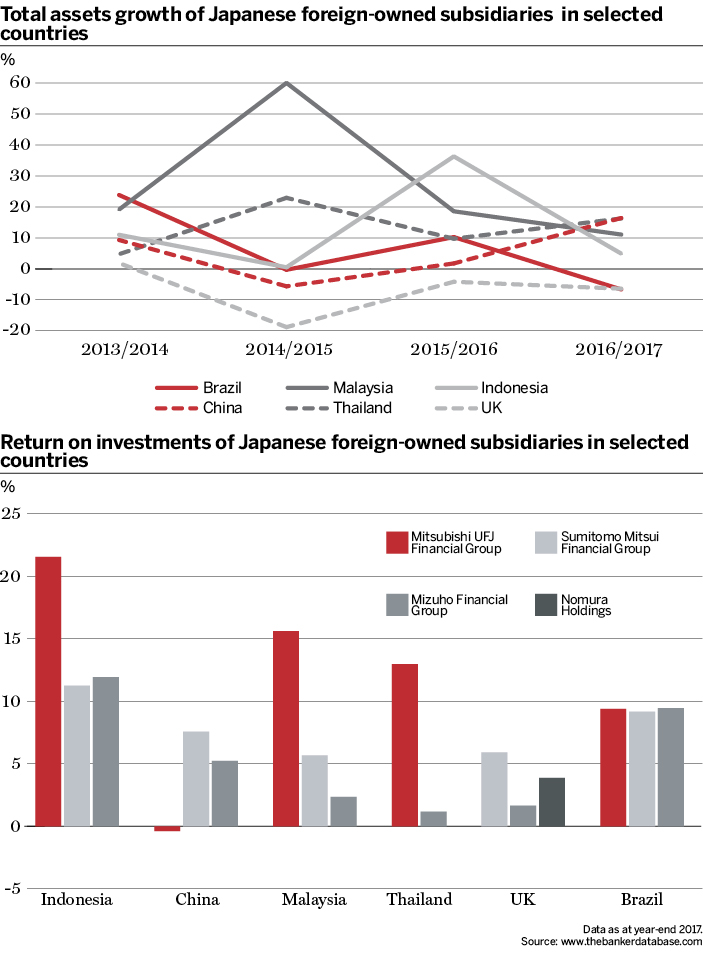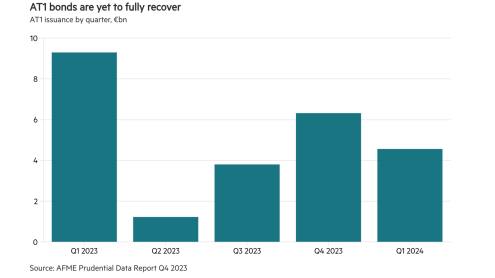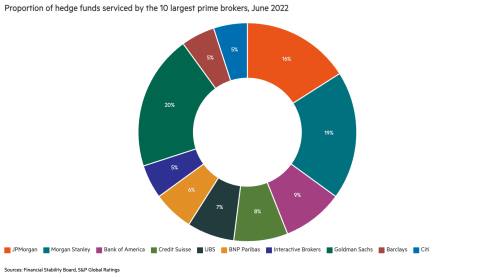Nobuyuki Hirano, president at Mitsubishi UFJ Financial Group (MUFG) said in early 2018 at the presentation of its annual results that MUFG is “in a lull now” and “need[s] to convert to a model that increases the lending balance and boosts earnings”. But growing loans portfolios alone is unlikely to solve the problem, because of stringent capital adequacy restrictions.
Among other Japanese mega-banks, Mizuho Financial Group has seen a decline in income over the past three years and mixed pre-tax profit results, while Sumitomo Mitsui Financial Group’s CEO has vowed to diversify business to boost earnings. Hungry for growth, Japan’s three biggest banks by assets have turned to investment in businesses abroad.
The biggest increases were in south-east Asian countries, with China, Thailand and Malaysia all seeing an increase of more than 10% in assets between 2016 and 2017, according to The Banker Database. Indonesia, Malaysia and Thailand have seen annual increases every year from 2013 up to the present. Some of the growth can be attributed to good compound annual growth rates (CAGR) in assets of 8.36% for Malaysia, 9.04% for Indonesia, 9.36% for China and 12.13% for Thailand.
Conversely, the banks have mainly been pulling money from Brazil and the UK. Although the average CAGR in Brazil is lower than the south-east Asian branches at 4.98%, it is at least positive. The UK is the only region to post negative CAGR over the past year. The uncertainty around Brexit is making Japanese corporates nervous, leaving the UK a less attractive region for banks to invest in.
In terms of return on equity (ROE), these Japanese banks do better than the international average, ranging between 8.15% and 11.35%. However, they fall short of the likes of JPMorgan Chase (14.03% in 2017), Goldman Sachs (13.69%) and Citigroup (11.23%).
Mitsubishi has had the best ROE results from its foreign investments among Japan's mega-banks, returning 21.65% from its operations in Indonesia. Bank Nusantara Parahyangan, which is 40% owned by MUFG, is set to merge with Bank Danamon, to further boost MUFG’s presence in the country. Indonesia has delivered the best returns over the past 12 months for the top three Japanese banks. Sumitomo announced in January 2019 that it is merging its Indonesian branch with Bank Tabungan Pensiunan Nasional to create the country’s 10th largest bank by assets. MUFG recently obtained permission to issue Islamic bonds, or sukuk, to compete in the Indonesian and Malaysian markets.
Though the foreign subsidiaries only contain a fraction of the total group assets for these Japanese mega-banks, they offer much-needed earnings growth and diversification.












